|
According
to the Hindu mythology, the earth is Additi,
the mother goddess. The Aryans, who crossed
the Hindkush mountains in the 15th century BC
were mainly the pastoral people, who drive
their herds of cattle for the better pastures
and race in chariots and settled in the Indus
and Gangetic plains. On their way, they sung
various hymns and poems and during this
several deities appeared. Some of these
deities were the Agni (fire), Varuna
(all-encompassing spirit of heaven), Rudra
(force of storms), Usha (dawn) and Surya
(sun), who were the personification of the
nature Gods. The Aryans also brought few women
with them during their journey and
intermarried with the indigenous Dravidians.
The gods of both the races began to be
worshipped together. The Aryans did not favour the Dravidians and divided them on the basis of caste, originally based on varna (colour)
but later on the nature of men’s occupation. |
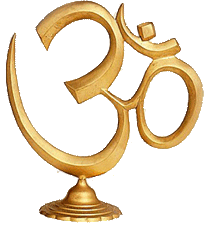 |
|
These four castes are the Brahmins, the priests, the Kshatriyas or Rajputs, the warriors, the Vaishyas, the traders and Shudras, the agriculturists.
These groups were ranked in a hierarchy of
ritual purity, with the Brahmins at the top.
This division later led to social
discrimination in the society. The
untouchables or outcastes were left with the
jobs which were regarded as impure, usually
associated with dealing with the dead (either
human or animal) or with excrement. Some of
the Kshatriyas and the Brahmins, went into the
forests to meditate on the problems of Life
and Death and the relationship between man and
God. The sayings of these thinkers later were
formed in the book called the Upanishads. One
of the main doctrine that emerged from the
philosophy propounded by the Upanishads was
that there is a Supreme God, Brahma who later
splits himself into many gods due to the sheer
compulsion of desire and thus the universe
came into being. There are corresponding
desire in the hearts of the many to seek Union
with the Supreme One, which can be achieved
through meditation and prayer. This doctrine
of the Upanishads was mixed up by the priests
with superstition and intricate rituals. |
Reform Movements
Various Hindu reformers dedicated their energy
to the revival of a more synthetic doctrine
based on the original faith. Most of the
original faiths have been transformed into
dogma. Some of these reformers emphasized on
the realization of the Supreme God through
personal devotion, also known as Bhakti.
Hinduism assumed the form of Brahmanical
Theism. The three main forms of Brahmanical
theism were found among the Hindus since the
medieval period which were associated with the
worship of three different gods. These three
forms are Vaishnavism, Shaivism and Shaktism.
Vaishnavism emphasize on the worship of the
god Vishnu. Besides Vishnu and His consort
Lakshmi, the Lord Rama and Krishna, are also
worshipped as the incarnations of the god
Vishnu. Shaivism emphasize on the worship of
the god Shiva, who is the creator, preserver
and destroyer of the universe. Shaktism
emphasize on the role of Shakti, the consort
of Shiva, as Durga, Mother Kali (destroyer)
and Parvati (preserver of the universe).
Various religious doctrines and practices are
also associated with this belief. Various
images of mother goddess and Lord Shiva are
also found in the remains of Mohenjodaro and
Harappa. The various beliefs of Hinduism were
influenced by Islam, Sikhism and Christianity
and this resulted in the strengthening of
faith in one God, the Supreme being. Various
philosophers also emphasized on the essential
unity of all religions. They believed that the
God is the same and by whatever name one may
describe Him. They worshipped both Rama and
Rahim. The reform movements of the Arya Samaj
emphasized on the “pure” Vedic doctrine, and
the Brahmo Samaj, insisted on the synthesis
between Hindu and Christian teachings and
introduced more rational concepts and
practices into Hinduism. Hinduism is like a
thinking man’s way of life and does not
enforce infallible concepts and beliefs. It
offers a philosophy for a good and a happy way
to lead life without invoking the wrath of
God. Freedom of belief and religious practices
are rooted in Hinduism.
Modern Hinduism
The beliefs and practices of modern Hinduism
were adopted about more than 2000 years ago.
But now there has been some major changes in
the beliefs and practices of the Hinduism. In
the 6th century BC, the Buddhist and Jains
tried to reform the religion of Vedism which
was dominant in some parts of India for about
five hundred years. Some of the great
philosophers such as Shankaracharya and
Ramanuja transformed some of the major aspects
of previous Hindu thought. Various Hindu
scholars and philosophers have talked about
Hinduism as one religious and cultural
tradition, in which the enormous variety of
belief and practice can be interpreted as
interwoven in a common view of the world.
There are various spiritual leaders and
philosophers who are widely revered, and there
is an enormous range of literature and
scriptures that are treated as sacred. The
Vedas of the Brahmanism are still regarded as
sacred by most of the Hindus, but virtually no
modern Hindu either shares the beliefs of the
Vedic writers or the practices like the
sacrifice. Not all Hindu groups believe in a
single supreme God and even today, there are
adherents of several of the major systems of
philosophy which developed in the course of
Hinduism’s most formative period from the
early centuries BC to the 13th or 14th century
AD. The living importance of Hinduism can
still be seen in the various activities of the
everyday family life to great temple rituals
across India.
|
|
|
Religious Treatises
The religious and philosophical beliefs of the early Hindus were found in the Vedas and the Upanishads, while the actual history of the Aryans is found in the two great epics, the Ramayana and the Mahabharata. One of the gods, who played an important part in the great war, was exalted to the position of Supreme God. This was Krishna, who later become one of the most favoured symbols of the human aspiration for union with the divine. His discourse to Arjuna has been enshrined in a long poem called the Bhagavad Gita. Today, the Bhagvad Gita is considered as the principal code for action for the Hindu masses. It sums up the philosophy of Hinduism and all the Hindus swear by the Bhagavad Gita. Between the fourth and ninth centuries, the various ancient gods of the Vedic period were there like Brahma, Agni, Surya, Indra and Siva.
|
 |
|
Later various gods like Vishnu, Shakti and a host of apsaras, demons and spirits were added to it. The images of these gods were also found on the walls of the Hindu temples. Various Hindu religious doctrines, practices and beliefs was codified in the books called the Puranas. These constitute a kind of
encyclopedia of the Hindu faith. The beliefs were supported by Puranic stories which were very effective among the illiterate people.
|
|
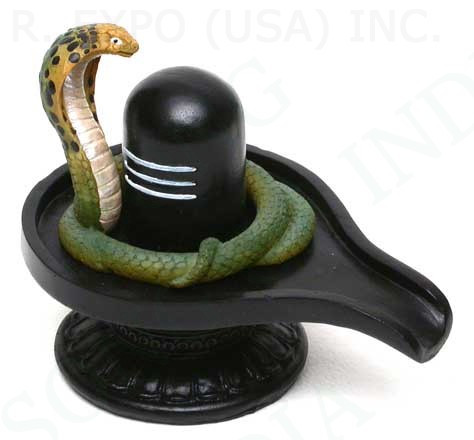 |
Hindu beliefs
Although it is impossible to tie down
Hindu belief to a universally accepted creed,
a number of ideas do run like a thread through
intellectual and popular Hinduism. One of the
recurring themes associated with that “life
conviction” is that of ‘vision’, ‘sight’,
'view’, also known as darshan. Applied to
the different philosophical systems
themselves, such as yoga or Vedanta, ‘Darshana’
is also used to describe the sight of the
deity that worshippers hope to gain when they
visit a temple or shrine. Equally it may apply
to the religious insight gained through
meditation or prayer. It is also widely
believed that there are four stages in an
ideal life. These stages are of the student,
the householder, the forest dweller and the
wandering dependent or beggar (sannyasi).
|
|
These stages represent the phases
through which an individual learns the
goals of life’s and the means of
achieving them, where he carries out
his duties and raises sons, and then
retires to meditate alone and then
finally when he gives up all
possessions and depends on the gifts
of others. The age in which we live is seen by Hindu philosophers as a dark age, the kaliyuga, and the most important behaviour enjoined on Hindu for this period was that of fulfilling the obligations of the householder. Besides this, there are four major human goals according to the Hindus. These four goals are material prosperity (artha), the satisfaction of desires (kama), and performing the duties laid down according to your position in life (dharma). Beyond those is the goal of achieving liberation from the endless cycle of re-births into which everyone is locked (moksha). Dharma represents the order inherent in human life. It is secular and doesn’t depend on any revelation or command of God. The Mahabharata talks of ten embodiments of dharma: good name, truth, self-control, cleanness of mind and body, simplicity, endurance, resoluteness of character, giving and sharing, austerities and continence. More accurately it can be thought of as the effect of former actions. According to this doctrine, every person, animal or god has a being or self which has existed without beginning. Every action, except those that are done without any consideration of the result, leaves an indelible mark on that self. This is carried forward into the next life, and the overall character of the imprint on each person’s ‘self’ determines three features of the next life.
|
Hindu philosophy
There are six major schools of Hindu philosophy. The yoga and Vedanta are the main schools of philosophy. Yoga can be traced back as a system of the 3rd century AD and possibly further. It is concerned with systems of meditation that can lead ultimately to release from the cycle of rebirth. In some senses it is just one part of the wider system known as Vedanta. Literally the term Vedanta refers to the final parts of the Vedantic literature, the Upanishads. The basic texts also include the Brahmasutra of Badrayana, written about the 1st century AD, and the most important of all, the Bhagavad Gita,
which is a part of the Mahabharata, the great
epic. The complexities of the different
schools of philosophy continued to exercise
the minds of intellectual Hindus. But the
abstractions of philosophy don’t mean much for
the millions of Hindus living across India
today, nor have they in the past. Some of the
Hindus believe in one powerful God who created
all the lesser gods and the universe. The
Hindu gods include many of the gods whose
origin lie in the Vedic deities of the early
Aryans. These were often associated with the
forces of nature, and Hindus have also revered
many natural objects. Mountain tops, hills,
trees, rocks and rivers were regarded as sites
of special religious significance. In South
India, trees are often painted with vertical
red and white stripes and have a small shrine
at their base. Hill tops frequently have a
shrine of some kind at the highest point,
dedicated to a particularly powerful god.
|
Worship
Today, most of the Hindus consider the
worship, often referred to as
“performing puja” as an integral part of their faith. The majority of Hindus have a small temple in their homes of one of the gods of the Hindu mythology. Various individuals and families also visit the holy places such as Benaras or Puri. Such sites have a temple which is dedicated to a major deity but there are various other shrines in the vicinity which are dedicated to various other gods. The various acts of devotion are aimed towards the relatively abstract goal of liberation, from rebirth and meeting the urgent needs for the life like good health, finding a suitable wife or husband, the birth of a son, prosperity and good fortune. In this respect there is a remarkable similarity in the devotion of the various pilgrims of all faiths whether they visit Hindu, Buddhist or Jain.
|
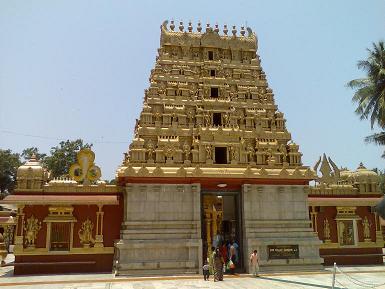 |
|
Temples, the tombs of the Muslim saints or the churches. In the domestic shrine or in a great temple, performing puja means making an offering to deity and
darshan means having a view of the deity. Although there are devotional movements among Hindus in which singing and praying is practised in the groups and the Hindus worship is considered as an act performed by the individuals. Thus, the Hindu temples may be a little more than a shrine in the middle of the street, that houses an image of the deity which will be tended by a priest and visited at special times when a darshan of the resident God can be obtained.
|
Pilgrimage
Most of the Hindus regard as particularly beneficial to worship at places where God has been revealed. These Hindus not only visit the famous nearby pilgrimage places like Varanasi, situated on the banks of the Ganges, but also visit the temples, hill tops and rivers all across India. Certain rivers and towns are also very sacred. These seven holy rivers are the Ganga, Yamuna, Indus and Sarasvati in the North, and the Narmada, Godavari and Kaveri in the South. Besides this, the seven holy places are Haridwar, Mathura, Ayodhya, and Varanasi in the North, Ujjain, Dwarka and Kanchipuram in the South. In addition to these places there are four Holy Abodes which are Badrinath, Puri, Rameshvaram and Dwarka which have the unique distinction of being both a Holy Abode and a Holy Place. Various festivals are also celebrated in the temples. The Jagannath temple in Puri is well known for the Rath Yatra that draws Hindu from all over India. Besides this there are various other small village fairs. During these festivals and fairs you can see the villagers walking in small groups, brightly dressed and often high spirited, sometimes as far as eighty to a hundred kilometers.
Religious Sects
Brahma, Vishnu and Siva are the three gods which are considered as very powerful gods. Their functions and character are not readily separated. The Lord Brahma is regarded as the ultimate source of creation, whereas the Lord Vishnu is regarded as the preserver or protector of the universe. Although the images and sculptures of Brahma, Vishnu and Siva have come to be seen as the most powerful and important. Their followers are known as the Vaishnavites and Shaivites respectively, and form the two largest sects in India. The Vaishnavites worship the god Vishnu and his incarnations and Shaivites worship the God Shiva.
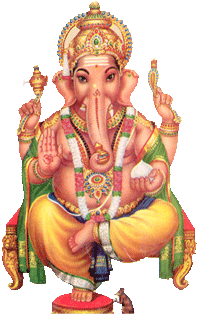 |
Ganesh
The Lord Ganesha or Ganesh is one of the
most popular gods of the
Hinduism. He is represented as
the elephant-headed god in the
Hindu mythology. The Lord
Ganesha is known by various
names in different parts of
India and on different
occasions as the Remover of
Obstacles, the god of domestic
harmony and of success. He is
the most beloved and revered
of all the Hindu gods. He is shown at the
gateways and on the door
lintels with his elephant head
and pot belly, and is
worshipped all over India.
Meetings, functions, special
family gatherings, opening up
of any new firm or company and
building are said to be never
completed without the prayer
to the Lord Ganesh. He is the
son of Parvati, the wife of
Lord Shiva. There are various
stories about how the Lord
Ganesha got his elephant head,
and about his exploits and
antics. According to the Hindu
mythology, he was created as
an ordinary boy, but once he
was defeated in battle with
the Lord Shiva. His head was
cut off by the Lord Shiva. As
a result, the Lord Shiva was
told to go into the forest and
get the head of the first
animal they found and to fit
that head onto the boy's neck.
They found a little elephant,
and it worked. Thus the Lord
Ganesha came into being.
|
|
Krishna
The Lord Krishna is worshipped widely as perhaps the most recognizable human form of the gods. His advice on the battlefield of the Mahabharata is one of the major sources of guidance for the rules of daily living for many Hindus today.
|
Vishnu
Vishnu is seen much more as the God with the human face. From the 2nd century a new and passionate devotional worship of Vishnu’s incarnation as Krishna developed in the south India. By 1000 AD, Vaishnavism had spread across south India, and was closely associated with the devotional from of Hinduism preached by
Ramanuja. According to the Vaishnavites, the god took these different forms in order to save the world from impending disaster. The famous incarnations of the Lord Vishnu are Matsya (fish), Kurma (tortoise), Varaha (Boar), Narasimha (Half man / half lion), Vamana (Dwarf), Parasurama
(Rama with axe), Rama, Krishna, Buddha and
Kalki. |
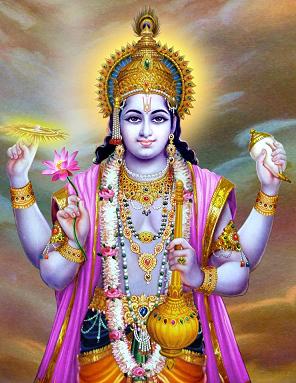 |
|
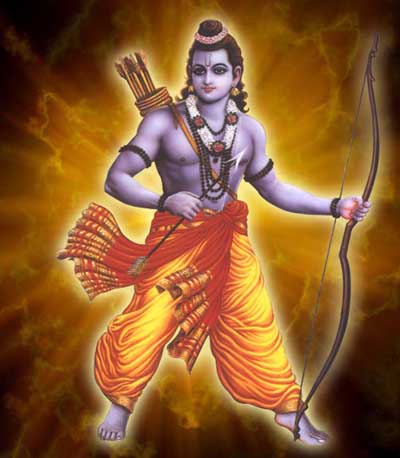 |
Rama
The most influential incarnations of
Vishnu are Rama and Krishna in which
he took up the recognizable human
form. The Lord Rama was the Prince of
Ayodhya, but as per the history and
mythology, Rama was a chief who lived
in the 7th or 8th century BC, perhaps
300 years after King David ruled in
Israel and the start of the Iron Age
in central Europe, or at about the
same time as the Greeks began to
develop city states. Rama was a very
powerful figure in contemporary India.
In the earliest stories about Rama he
wasn’t regarded as divine. Although
he is now seen as an earlier
incarnation of Vishnu than Krishna, he
was added to the pantheon very late,
probably after the Muslim invasions of
the 12th century AD. The story of Rama
has now become part of the culture of
India and is performed during the
festival of Dussehra. Ram's supposed
birthplace at Ayodhya has also become
the focus of fierce disputes between
Hindu and Muslims. Hindus have
identified Ram’s birthplace as a
site currently occupied by a mosque.
One of India’s leading historians
has argued that there is no historical
evidence for this view. |
|
|
Shiva
The god Shiva is regarded as the creator and destroyer of the universe. The god Siva lives on Mount Kailash with this wife Parvati and two sons, the elephant-headed god Ganesh and the six-headed Kartikkeya, who is known in south India as Subrahmanayam. He is always accompanied by his ‘vehicle’, Nandi, the bull. They from a model of sorts for family life. He is also widely portrayed in sculpture and art, and most commonly as the dancing Nataraja on the bronze, the Lord of the Cosmic Dance. He is also shown as an ascetic, sitting among the mountain peaks around Mount Kailasa, accompanied by his wife Parvati and meditating on the nature of the universe. The Lord Siva is represented more widely in the Shaivite temples throughout India in the form of the Lingam, or phallic symbol, a symbol of energy, fertility and potency.
Professor Wendy O’Flahert suggested
that the worship of the Siva linga can
be traced back to the pre-Vedic
societies of the Indus valley
civilization, but it first appeared in
Hindu iconography in the 2nd century
BC. From
that time a wide variety of myths
appeared to explain the origin of
linga worship. The myths surrounding
the twelve jyoti linga (linga of
light) found at centers like Ujjain go
back to the 2nd century BC, and were
clearly developed in order to explain
and justify linga worship. The Lord Shiva
is worshipped as Rudra, Shambhu and Shankara. |
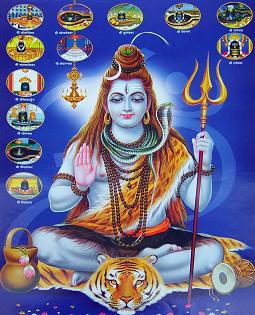 |
|
|
The Mother Goddess
One of the best known form of the Hindu cults is that of the Shakti, a female divinity who is often worshipped in the form of Durga. The worship of the female goddess developed into the widely practised form of devotional worship known as Tantrism. The goddess such as the Kali became the focus of worship which often involved animal and human sacrifices and ritual practices that flew in the face of wider Hindu moral and legal codes. The evidence of these practices can be still seen in the art and sculpture of some major temples. Tantric practices affected both Hinduism and Buddhism from the 8th century AD, its influence can be seen in the sculptures of the Khajuraho and Konark and in the distinctive Hindu and Buddhist practices in the Kathmandu Valley of Nepal. |
|
|
Image
The image of the deity can be in one of the many forms. There are temples which are dedicated to Vishnu, Siva or to any one of their incarnation. Parvati, the wife of Siva, and Lakshmi, the wife of Vishnu, are the focus of many temple shrines. The image of the deity becomes the object of worship and the center of the temple’s rituals. They follows the cycle of day and night, as well as yearly lifecycles. The priests wake up the deity from sleep, bathe, clothe and feed it. Various devotees are also invited to share in this process by bringing offerings of clothes and food. Gifts of money are also usually made, and in some of the temples a charge is also levied for taking up positions in front of the deity in order to obtain a darshan at the appropriate times. |

